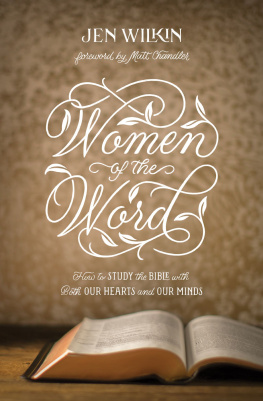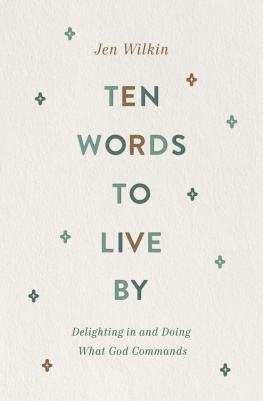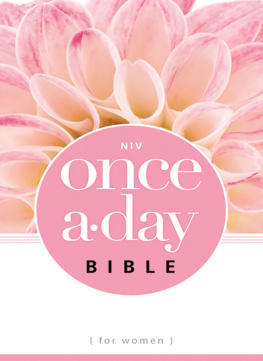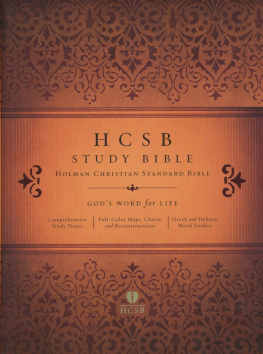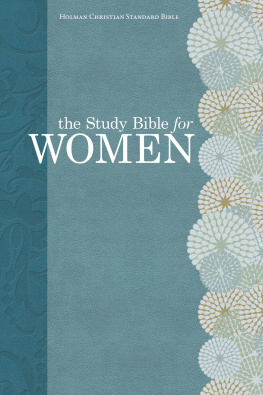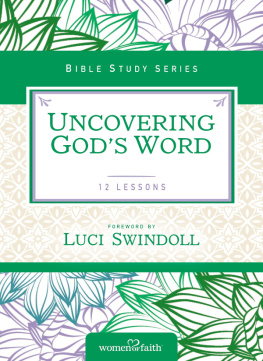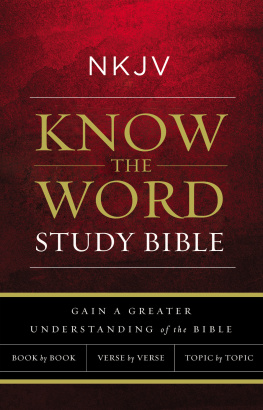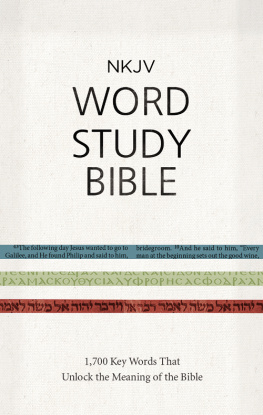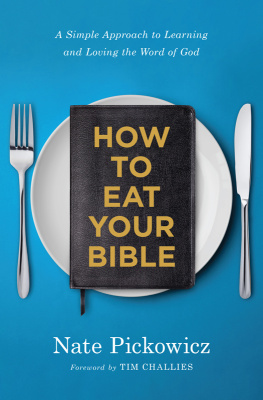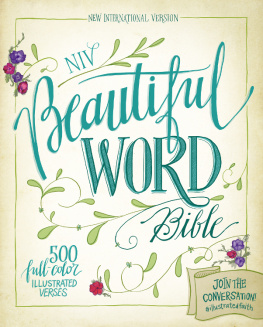Table of Contents
Landmarks
Women of the Word
How to Study the Bible with Both Our Hearts and Our Minds
Jen Wilkin
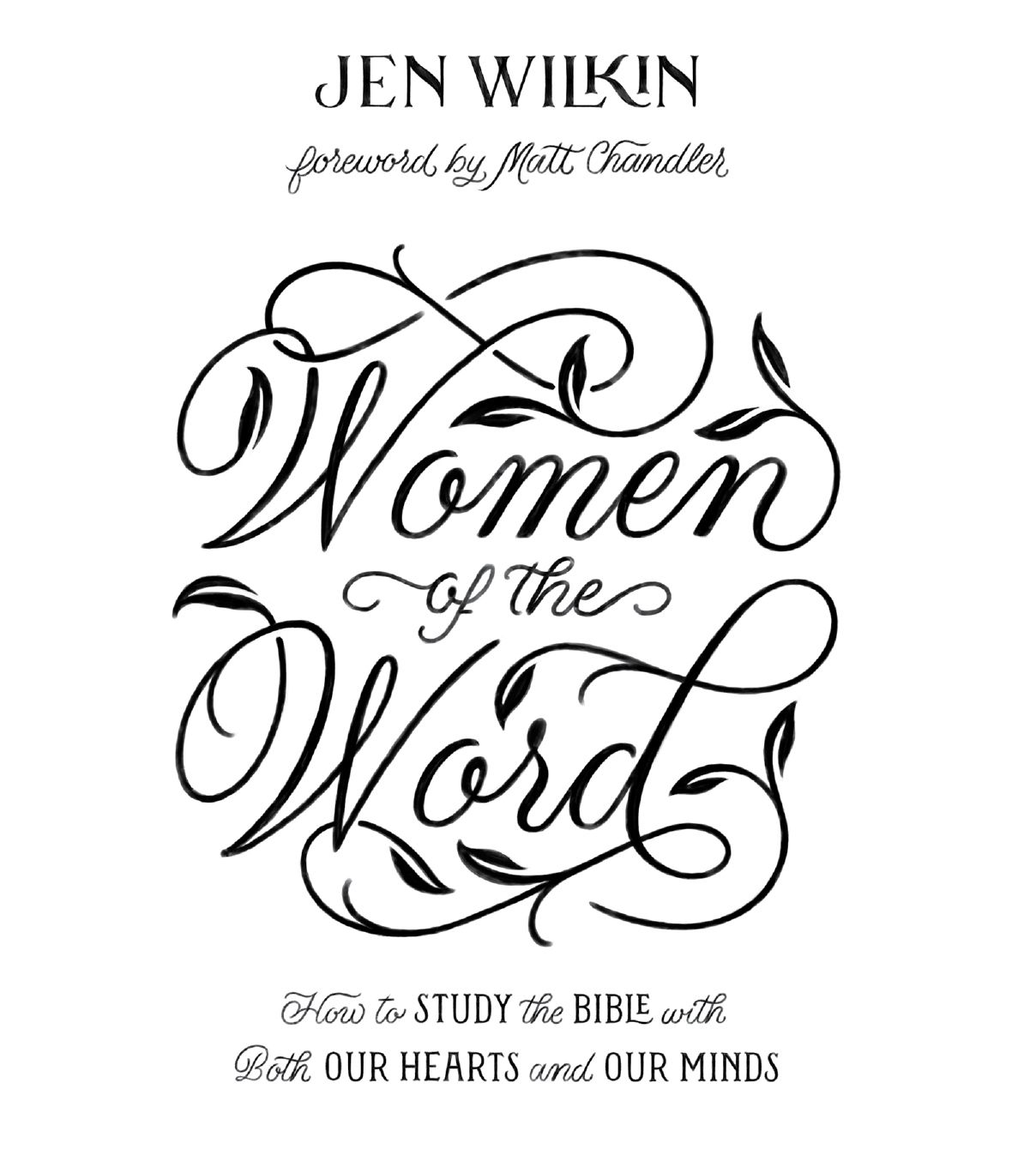
Second Edition
Prepare your work outside; get everything ready for yourself in the field, and after that build your house.
Prov. 24:27
We have been learning to build Bible literacy by studying with purpose, perspective, and patience . But as with any building project, a good process is also required.
The process I am going to outline here is different from what you might find in a typical packaged study. Many studies ask you to read a portion of Scripture and reflect, after which they offer thoughts on its proper interpretation and application. The process I want to introduce asks you, the student, to carry the burden of not just reading, but owning the text, and then of attempting interpretation and application on your own. Only after you have done so will this process direct you to look to the opinions and scholarship of others for help.
Im a fairly creative person. I would rather sketch freehand than trace methodically; I like playing the piano by ear better than by reading music; I like to sew without following a pattern; I like to plant my flowers all willy-nilly instead of evenly spaced; and I like to cook without measuring anything. It may not surprise you that my results can be a little hit-or-miss.
My husband Jeff, on the other hand, is a master of process. He comes from a family of process-driven people who do things the right way for the sheer satisfaction of doing so. There is a right way to do whatever needs to be done, the Wilkin family knows that way, and they will do it exactly that way, no matter how hard it is or how long it takes. There is a proper way to fold towels, to organize a pantry, to trim a hedge, to clean a paintbrush. I have affectionately dubbed this the Wilkin Way. I and my entire crooked-towel-folding family of people-who-would-rather-just-buy-another-paintbrush-than-clean-one-out, find the Wilkin Way both magnificent and incomprehensible.
Lets just say the early years of my marriage provided an opportunity for me to learn and grow.
I like to think Jeff has grown in his appreciation for the happy accidents and unexpected genius I have contributed to meals, Halloween costumes, and the occasional gardening triumph. I have certainly grown in my appreciation for honoring a process. I have watched the Wilkin Way result in beautifully refinished furniture, meticulously painted rooms, perfectly crafted decks, immaculately manicured lawns, and barbecue that will make you weep just to taste it.
The world needs both willy-nilly creatives and process-driven builders. Both contribute their strengths to the body of believers. But Bible literacy is closer to a building project than an art project. If you were building a house, you would hire a builder who observes process, not one who thinks building codes are great suggestions. You would want a builder who subscribes to the Wilkin Way of thinking. And thats the kind of builder you and I must become in order to build Bible literacy. We must be those who build on the rock-solid foundation of mind-engaging process, rather than on the shifting sands of what this verse means to me subjectivity.
How should we build our understanding of Scripture? By what orderly process? A good literacy-builder honors the learning process by moving through three distinct stages of understanding: comprehension, interpretation, and application . Each of the three stages seeks to answer a specific question about the text.
1.Comprehension asks, What does it say?
2.Interpretation asks, What does it mean?
3.Application asks, How should it change me?
We actually move through these stages intuitively in our everyday lives; we use them all the time to process information. Anyone who wakes up to an alarm in the morning has moved from comprehension to interpretation to application:
- In a deep sleep, we become aware of a sound. At first, our brain may ignore the sound or incorporate it into whatever dream we are having. As the sound repeats, our brain recognizes my alarm is going off. We have comprehended the sound. It is not the smoke detector, it is not part of a dreamit is our alarm.
- Once we realize we are hearing our alarm, our brain interprets its meaning: It is 7 a.m.
- We then apply what our sleepy brain has comprehended and interpreted: It is time for me to get up and start my day.
In this simple, everyday example, we move from comprehension to interpretation to application so quickly that we are probably not aware the first two stages have even taken place. With Bible study, each stage requires more deliberate effort and considerably more time. Notice, too, that each stage will operate within the framework of the purpose, perspective, and patience we have already set in place.
- We will need to reflect on the purpose of our study, allowing the three stages to help us place our text within the Big Story.
- We will need to employ the perspective of our five archaeological questions to help us with comprehension and interpretation.
- We will need to draw on the patience we discussed in the previous chapter to help us resist the urge to rush straight to application.
Now lets consider how each of the three stages functions within the context of Bible study as an orderly process for building literacy.
Stage 1: ComprehensionWhat Does It Say?
The comprehension stage is probably the most neglected and misunderstood by students of the Bible, mainly because we assume that reading a text and absorbing a sense of its message equates to comprehending it. Because of this misconception, we will take our time discussing what comprehension is and how it is reached. If you have read other books about Bible study, you may have heard the first step in the learning process termed as observation rather than comprehension. I believe comprehension better captures what we want to accomplish. Observation can be subjectiveit can connote a casual perusal, in which I pull out details or thoughts that seem significant to me as I read. Comprehension, on the other hand, is more objective. It seeks purposefully to discover what the original author intended me to notice or ask.
Remember the reading comprehension section on the SAT? Remember those long reading passages followed by questions to test your knowledge of what you had just read? The objective of those questions was to force you to read for detail. This is exactly how we should begin our study of a text. Asking ourselves What does it say? is hard work, and it requires us to slow down when we read. A person who comprehends the account of the six days of creation in Genesis 1 can tell you specifically what happened on each day. This first step of comprehending what the text says moves us toward being able to interpret and apply the story of creation to our lives.
A good builder uses good tools. What are the tools we can use to begin to build comprehension of a passage? I want to suggest six:
1. A Printed Copy of the Text
If you were to look through the books on my bookshelves, it would not take you long to figure out which ones are the most loved. A worn spine might be your first hint, but flipping through the pages would quickly reveal my favorites: the margins are covered in handwriting, favorite paragraphs are highlighted, beautiful phrases are underlined, ideas I disagree with are marked with a giant cross-hatch and an answering thought. But if you opened my Bible, you would see pristine pagesno handwritten notes at all. Why dont I take notes in the most important book I own? Because there isnt enough room.

